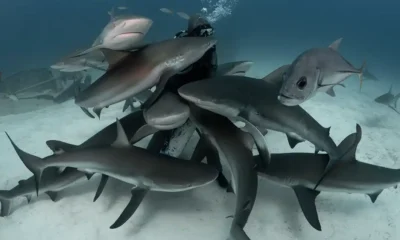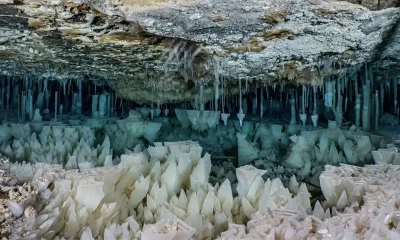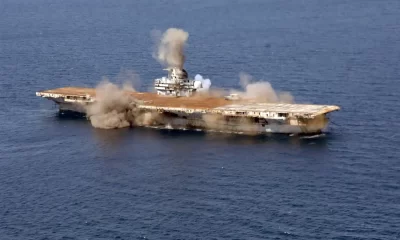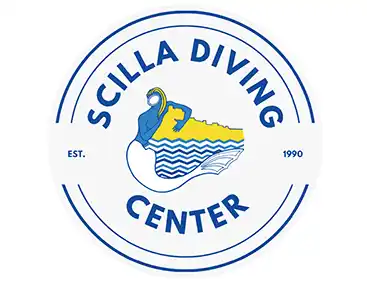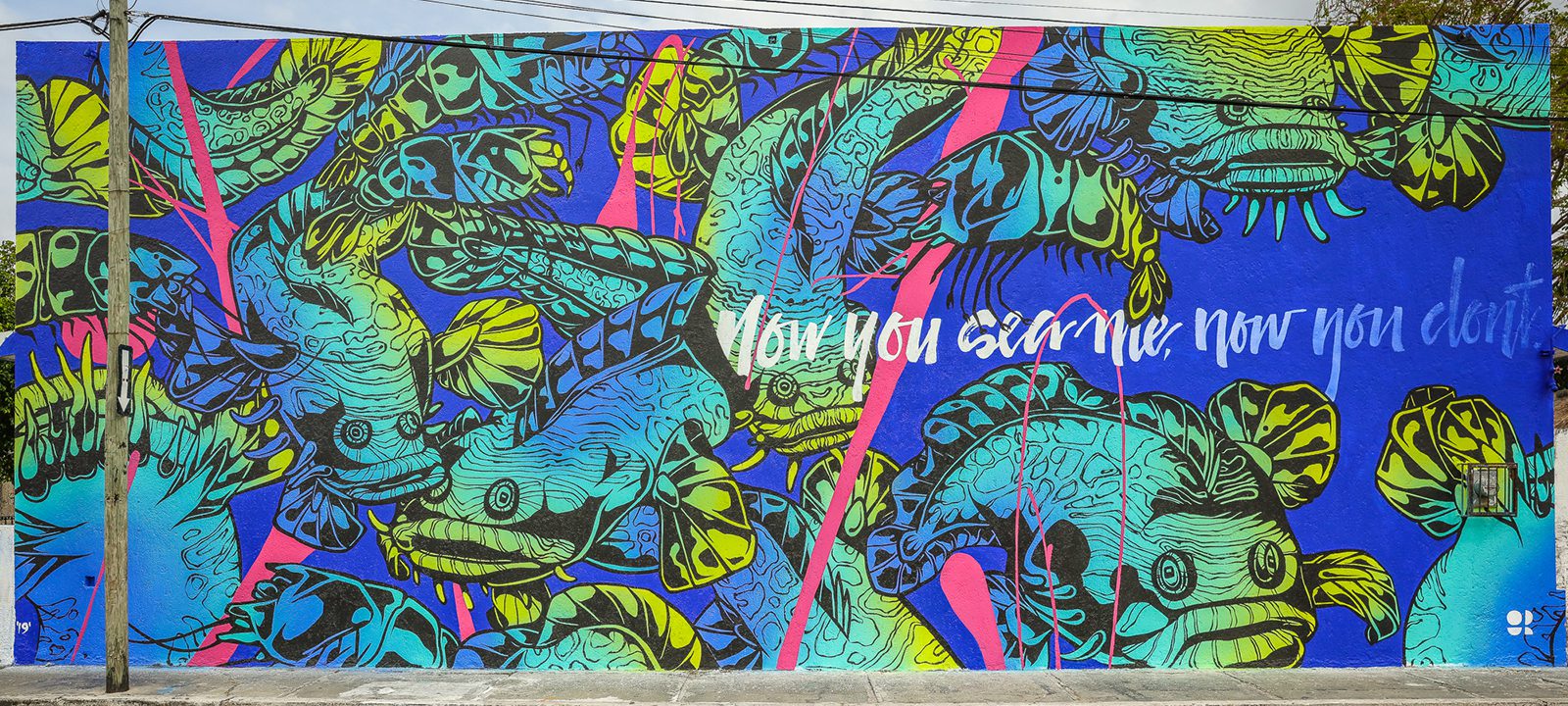
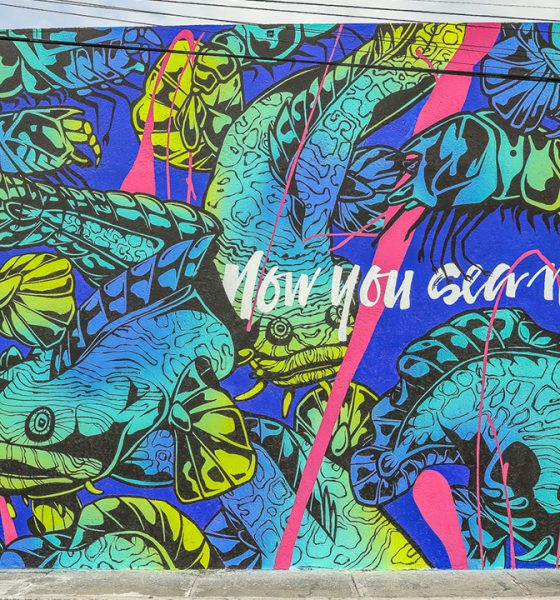
Art
Drop of Paint, Ocean of Change
ARTivist Tré Packard is deploying art as a weapon of “mass construction” to build ocean awareness, one wall at a time.
By SJ Alice Bennett and Pat Jablonski. Images courtesy of PangeaSeed Foundation.
Tré Packard believes in the power of art and imagery to elevate human awareness. The 45-year old, award winning environmental photographer, public art curator and founder and executive director of the PangeaSeed Foundation has assembled a global army of artists he’s dubbed “ARTivists,” who are dedicated to creating awareness and connecting land dwelling humans to the sea—Mother Ocean. Their motto: A drop of paint can create an ocean of change!

“I wanted to use a tool that could start conversations and encourage people to look at our delicate ecosystem from a different perspective or through a different lens. And, for me, art was that tool—that bridge,” Packard explained. The result? Since forming PangeaSeed Foundation in 2012, the Hawaiian-based nonprofit organization has curated and organized the creation of more than 450 murals in 18 countries around the world—think Wyland Walls on steroids— and currently have nearly 40 new murals in the works! Packard calls it a weapon of “Mass CONstruction.”
The entrepreneurial environmental documentarian got his start documenting illegal wildlife trade, and in 2008, uncovered the largest industrial shark finning operation in Asia. “It was a big turning point for me,” he said. “One where I understood the importance of a photograph and the impact that that one can have. But at the end of the day, documenting death and destruction on a daily basis was really heavy on my heart. I wanted to shift gears and show these animals and the environment in a positive light, in the way that I see them as well.”

A year later, Packard, who grew up in a family of artists, held his first art show in Tokyo, which included a mix of art in a gallery format and incorporated music, film, interpretive dance and discussion. “I incorporated many creative elements to get people thinking about oceans in a different light. Because, even in a city like Tokyo—right on the ocean—there is such a major disconnect,” he recalled. Packard was soon approached by several curators in different parts of the world saying, We love what you’re doing; can we do it here in San Francisco, Indonesia, Sri Lanka?
Packard accepted their invitations as an opportunity to realize his dream. He relocated back to the states in 2012, incorporated PangeaSeed in Hawaii as a 501(c)(3) nonprofit foundation, selected a Board of Directors, and began developing his ARTivist programs. InDEPTH caught up with Packard as the foundation celebrated its 10 year anniversary. Here is what he had to say.

InDEPTH: I’m intrigued by the name of your foundation. What is PangeaSeed derived from?
Tré Packard: The concept of PangeaSeed is from Pangea, which is the concept of a supercontinent that existed when all the continents were once joined, perhaps from 200 to 300 million years ago. Now that land masses are separated, the oceans are the great unifier—they connect us all. I love that idea of Pangaea. That idea provided the origins of PangeaSeed Foundation: the concept that the oceans connect all of us and sustain all life on the planet. No human or no species can survive without healthy oceans. So, since we are connected to the oceans, it’s our responsibility to take care of them for ourselves and for future generations.
And the seed?
The seed is the origin of everything. That’s growth. And then we created the four pillars that we operate under, which are sustainability, education, ecology, and design. So it serves as an acronym as well.

It seems amazing that you have more than 450 murals in 18 countries. And it sounds like that idea of taking it everywhere was integral to the very beginnings of your project, to spread it around the globe?
One hundred percent! That was something that was kind of like part of the foundation of the organization is that we wanted to get as many people on board as possible because it takes everybody to solve these problems. Art is this great unifier, it’s this great communication tool, it transcends borders and races and religions. It brings people together on a really unique level that I think is in everybody’s DNA. We human beings respond to imagery.
So we were working in gallery spaces and event spaces and things like that. Then in 2010 or 2011, I was documenting manta ray overfishing in Sri Lanka, and we decided to paint a mural in a small fishing village just to see if it would get people talking. And it did—immediately people recognized there was an issue. This is a species that has helped sustain their village for generations, but due to international pressures, there was a high demand in China for gills and so on. So they were getting overfished.
That was a light bulb in the dark as to how art taken to the public connected with people. We went back and tinkered with that model for a year or two and came up with a festival format. We invited 15 international artists with clout within their community. We wanted to connect with people we identified with in terms of our generation. At that time conservation felt conservative or militant, and there weren’t a lot of younger people that were engaged. We hoped that tools that they could relate to, such as music and art, were ways to get the message across.
To us, there was so much immediacy around the issues of climate change, overfishing, biodiversity loss, and everything that was impacting the oceans, and still are, right now. All those things are so immediate, it’s this perfect storm of stressors and we need everybody on Team Ocean right now.


We empathize with you, for sure. But wasn’t it hard to get people to see you and hear your message?
We thought that public art could be used to bring these messages into the streets. As well as communication about science. There is such a lack of connection between the scientific community and the general public. That’s not their job necessarily. Their job is to do the research and get the data. But there’s a gap in terms of translating it so that the general public can get excited about it and get on board with it. Data can put some people off, but when data is put forth creatively, it connects with people. From the beginning, we’ve teamed our artists up with researchers in their areas.
Because it is a nomadic project, the “Sea Walls: Artists for Oceans” is one of PangeaSeed Foundation’s programs. We like to say we take the oceans into the streets.
Where everyone can see it.
Totally. It caught on. We incorporated in 2012, our first large-scale project was in 2014, and we are now inching toward 500 murals in more than 18 countries and we have artist network spanning over 65 countries. It has consumed our lives over the past good part of a decade.

Are you reaching out to artists, or are they seeing it and reaching out to you?
At first we were reaching out, but now people contact us. We created our own blueprint, then suffered through bureaucracy, red tape, and reluctant property owners. But we developed a world-class program that attracts artists who want to, as we say, paint for a purpose. Yes, the pandemic slowed us down, but we learned a lot, and we have a tight formula now. We took it online and appealed to the community. So, happily, we are in no short supply of concerned creatives who want to join us in our mission.
That’s amazing. I also understand that you help the artists get their permits, find them space, a wall or appropriate space for the art, and raise some funds to help them create these masterpieces. Is that right?
Exactly, yes. We do all the work in the trenches and the lead up, so when the artists come, the only thing they do is get on their wall and paint. And then we flank the project with panel discussions, film screenings, beach cleanups, and youth outreach. The murals are the focus, but there’s a lot of opportunity for community engagement. And then, at the start and at the end of the project, we do environmental and cultural excursions. This gives them a chance to interact with the community and learn about the issues firsthand.


Tell me more about those excursions.
Okay, well, for example, I’m a PADI diving ambassador. PADI has been a great supporter of our organization for years, so when possible, we’ll introduce certain artists who then become scuba certified so they can learn about environmental issues firsthand, along with researchers and the dive community. It’s transformative. They get a passport to 70% of the world that they’ve never seen before. We’ve seen it really shift artists’ practices so that they develop an advocacy to their art. Some even go on to either start their own organization or sponsor a festival that has an environmental awareness purpose. It’s exciting to see that ripple effect.
That’s fantastic! And do you keep in touch with the communities after the installation goes in or the painting and the activities? Do you stay connected?
We definitely try to. Each project is about 12 to 18 months in the planning, and we work with a local team to help drive the ball over the goal line. We work with community leaders and local businesses, educational institutions, research institutions, and so on. By the time we are on the ground, a lot of people know that it is coming. And at that point, once the murals are finished, we turn that over to the community. It becomes a kind of a legacy.
We also engage with a lot of community members who are concerned about climate change and plastic pollution, helping them to tell their stories through the projects. Then they become ambassadors for the murals, as well. It hasn’t always been that smooth. In the beginning, we didn’t know what we were doing. But I think we had ambition and passion, and there were a lot of people to support us, so we set ourselves up for success. But it’s taken time to create a sustainable model we can replicate that works well.
Of course we’re active in countries all over the world, so we’re dealing with cultural practices that create so many barriers in so many places. Even like fine art or mural art, traditional mural art is viewed as graffiti. There’s a hand holding process to walk people through to help people understand that this is not vandalism or something that will devalue property. We have many challenges—from taking the project from the polar bear capital of the world in the subarctic down to the coral triangle in Indonesia—and everywhere in between.

We love your tagline, “A drop of paint can create an ocean of change.” It’s brilliant! And “ARTivists.” Love that!
Thank you. One of the blueprints for what we do as an organization is I listen to our team members, and I’ve always tried to follow my intuition. A lot of my ideas come to me while I’m in the water. Artivists, artivism, it’s a great way to put together art and activism. Yeah, a drop of paint can create an ocean of change. Paint for a purpose and so on. They are catchy, and I think that’s what people remember. Especially in today’s society where we are inundated with information. It’s important to have ways to connect with people quickly. Because we’re trying to communicate science in a way that is digestible and interesting. Presenting somebody with a scientific paper, good luck. But if you can present them with a cool tagline or a mural that focuses on plastic pollution or ocean acidification or so on, you might have a chance to grab their attention and have them actually look at it.

How many people are on your team?
Five full timers, plus a team of part-timers. And we have our core network around the world of invaluable volunteers. We have purposely stayed small and nimble in order to remain flexible. We wanted to be able to just blaze trails when and where we needed to. I think it’s proven to be an advantage for us, especially during the pandemic. People were tightening their belts because no one knew what was going to happen.
We got lucky because our fundraising model focuses on traditional routes, like grantmaking, sponsorships, and so on. But for the core fundraising, we work with artists to create limited-edition art prints and products, sustainable products, that then goes to support us, the artists, and gives somebody something to put on their walls, or it’s wearable art to tell the story. We’ve had a program called Printed Oceans since 2012 or 2013. We’ve done close to 300 editions with artists from around the world. These are beautiful fine art editions, signed and numbered by the artist. It’s a really strong fundraising model for us. Check out some of those on shop.pangeaseed.org.

What are you working on currently?
We’ve got three major Sea Walls projects slated for this year. One in Emeryville outside of San Francisco right on the bay where there are major issues impacting the estuaries and the coastal development happening there, as well as runoff. Then, I want to say 15 large-scale murals in Emeryville. That’s in September. And then we are doing Jakarta in Indonesia. We are going to be working with a community there in October, and we are doing around 20 murals for that one. And then the last one is going to be in St. Thomas, the US Virgin Islands, in November.
That’s very cool Tré! You’ve just completed your first 10 years of some amazing work. Where do you want to be in the next 10?
Thank you for mentioning our 10-year anniversary. It’s a big year for us. In the nonprofit world, it’s a luxury to plan that far into the future, but we will continue to trust our instincts and blaze trails for the greater good. The environmental issues impacting oceans aren’t going anywhere anytime soon, so we’re in this for the long haul and don’t plan on stopping until the wheels come off, so to speak.


What are you hoping for in the future?
The future? We will continue to bring the oceans into the streets worldwide via creative avenues. Keeping our hearts and minds open, embracing new technologies to better communicate science and data artistically, and leveraging our ever-growing international support network to help give our oceans a desperately needed creative voice. It is our hope that individuals around the world will discover and continue to embrace the undeniable power of art and activism as critical communication tools for environmental stewardship.
We need it! Thank you and your team Tré
For more info about PangeaSeed projects please check out: seawalls.org
To support ocean awareness and feed your soul with ART point your browser to: shop.pangeaseed.org
Also be sure to check out their amazing videos: vimeo.com/pangeaseed

InDEPTH’s art director SJ Alice Bennett has been photographically documenting the world around her since she was a kid. After completing a diploma in Graphic & Communication and a B.A. in Visual & Motion Design and moving to Quintana Roo, Mexico in 2017 she’s turned her focus on the underground rivers of the area. Her documentary style of shooting is well known for capturing the emotions of the moment and creating a sense of being there with her. She has a passion for documenting exploration and has worked as a freelance photographer and graphic designer around the globe.

Many years ago, InDEPTH’s Manager of Copy Editing Pat Jablonski, earned both a B.A. in English Lit and an MSW, and is retired from several jobs: Director of a program for women needing to re-enter the workforce, psychotherapist, remedial English writing instructor and English writing tutor at Palm Beach Community College. Pat has been editing for GUE, off and on, for many years, but since moving to High Springs in 2015, she happily assumed the role of coordinator of the editing staff. She writes all the time, with three self-published novels that she admits were just practice, several manuscripts, and a bevy of short stories. She would rather write than sleep, but the thing she loves better than that is her two grandchildren. She lives with her patient and loving husband of 50+ years on five acres of trees with a rescue dog and a foundling cat. She’s passionate about justice, equality, and caring for our planet. She loves to play games, visit with friends, walk on any beach, hang out with her family, and cook.


















